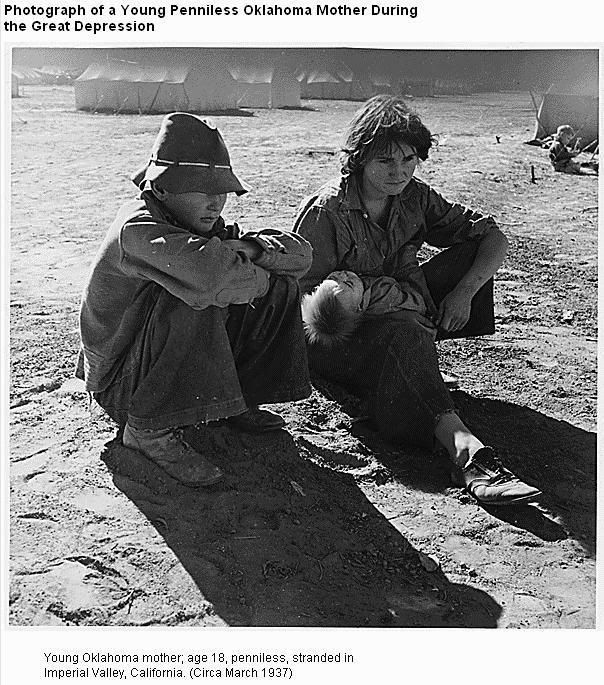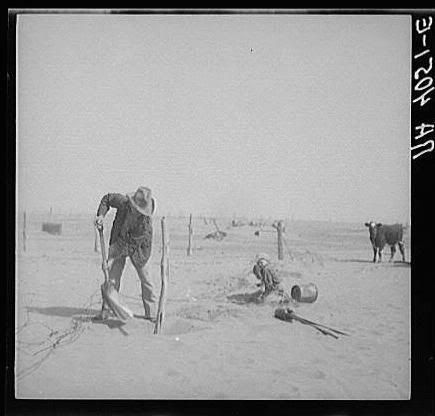Even though Oklahoma City skirted the generally defined edge of the Dust Bowl and that the "event" is more an "Oklahoma" than an "Oklahoma City" topic, it would be wrong not to include it as part of Oklahoma City history. Even though its impact more directly hit western Oklahoma, particularly the northwest, the impact of the Dust Bowl was certainly felt in Oklahoma City and, in a broader sense, the general "label" which many in and out of Oklahoma City came to have if they are from Oklahoma -- was born -- "Okies."
Without the commentary in my blog post, here are the images in my blog post at Doug Dawgz Blog: The Dust Bowl .
Unlike those recently extended compassion and welcome in the post-New Orleans Katrina exodus, Okies were not greeted with "open arms." In The Road Wanderer ~ Historic Highways, Lost Byways and Legendary Journeys, it is said,
"The plight of the Oakies became a part of the Route 66 story, the legend of the road. In 1934, Los Angeles police stationed themselves at the Arizona border in order to check the wave of dust bowlers. The police held all immigrants at the state line, allowing only a few across at a time and turning many back. This checkpoint didn’t last, however, and emigration on Route 66 continued through the 1930s. By 1939, the migration had reached epic proportions, and Californians reacted with fear and anger. One California grower put it in the following way: "This isn’t a migration—it's and invasion! They’re worse than a plague of locusts!"


And there were many, many others ...


Maybe we'll return the favor when western California drops off into the Pacific?
No, we won't ... that's not what Okies would do!









































Bookmarks